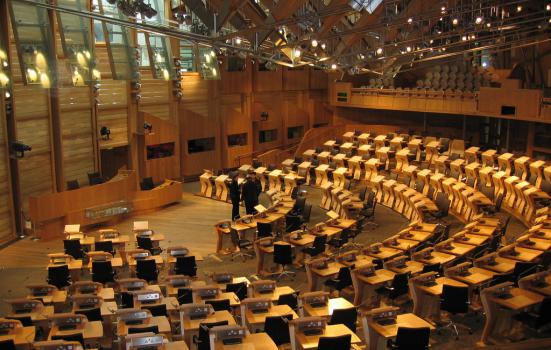Pressure from Government, unrest in the arts sector and negative media coverage has put Creative Scotland on the spot.

eimoberg
Andrew Dixon, Chief Executive of Creative Scotland, has put up a staunch defence of the policies and performance of the national agency for Scotland’s arts, film and creative industries, which this week has been subject to scrutiny by the Scottish Parliament’s Education and Culture Committee.
Documents published prior to the Committee review included a special report by the Scottish Parliament Information Centre (SPICe) detailing the criticisms of Creative Scotland's announcement of changes to its investment models earlier this year, in response to which the agency agreed to extend the funding of 49 flexibly funded organisations, which should have moved onto the project-based agreements in April 2013, for a further six months to September 2013. The report also reveals that the Creative Scotland Board was sent a letter of guidance from the Cabinet Secretary in July this year, suggesting that Creative Scotland should give greater emphasis to listening to the concerns of the cultural sector, including artists and creators, and maintaining its relationship with the whole cultural sector, not just those who receive grants.
Against the backdrop of the published reports, the panel took oral evidence from Andrew Dixon, Chief Executive of Creative Scotland, and three representatives from the arts sector – Matt Baker, Public Artist; Gwilym Gibbons, Director of Shetland Arts Development Agency; and Francis McKee, Director, Centre for Contemporary Arts. At the meeting, Dixon clarified and defended Creative Scotland’s approach to a wide range of issues, notably Lottery funding, transparency, spending on external consultants, the composition of its board, the spread of the organisation’s activity across Scotland and its communications with the arts sector in Scotland. The latter has been a particular issue for Creative Scotland in recent weeks, with the Scottish press having published several highly critical pieces by prominent members of the artistic community, and Dixon admits “Although we have got the information about the change out to the organisations that we deal with, we have not been good enough at getting it out to the people around the edges who have been commenting in the press and elsewhere. We put our hands up and say that we need to do more to communicate that information and to listen to people’s concerns.”
Prior to the meeting Matt Baker had provided a written submission to explain his views, in which he described how he had consulted with other artists in an attempt to represent the sector more effectively. But in a personal blog he clarifies that the views he expressed in the submission were his own, and feels that the Scottish press has placed undue emphasis on his criticism of Creative Scotland. He said: “…what I intended, was to provide positive strategies for action that would benefit grassroots arts in Scotland and assist Creative Scotland in achieving their aims”, and emphasises that it was NOT his intention to whip up any kind of public controversy.



